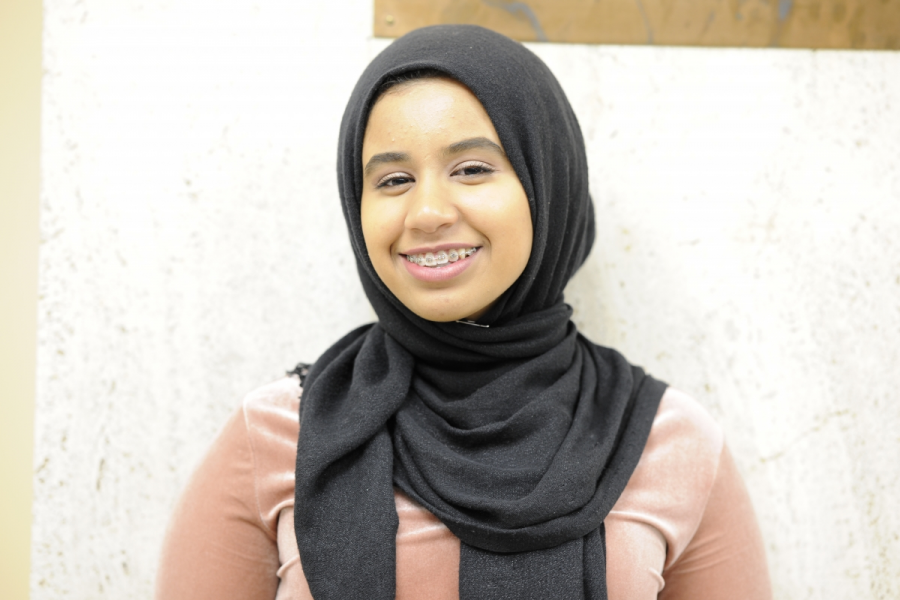Newest Barbie Wears a Hijab
Rajaa Elhassan ’19, president of the Muslim Student Association, gives her opinion on the new Barbie.
The original Barbie doll made by Mattel had blonde hair, blue eyes, and an unrealistically proportioned figure. She’s come a long way since then, with Mattel’s latest doll having dark skin, a toned figure, and most surprisingly, a hijab. This new Barbie is modeled after Ibtihaj Muhammad, an American Olympian fencer, and is the newest member of the “Shero” doll family. Muhammad won a bronze medal in the team saber event in the 2016 Rio de Janeiro Olympics as the first American athlete to compete in the Olympics with a hijab.
Muhammad’s doll is the tenth to join the “Shero” line of dolls that Mattel has recently created. This line celebrates women who challenge the boundaries and social norms in their fields of work. It features women such as U.S. Olympic gymnast Gabby Douglas, “Selma” director Ava DuVernay, and ballerina Misty Copeland. Now joining the ranks is Muhammad. Her doll will debut in 2018 and is expected to rapidly sell out. “I’m proud to know that little girls everywhere can now play with a Barbie who chooses to wear hijab! This is a childhood dream come true,” wrote Muhammad in a tweet.

Shaira Jafar ’21 shares her thoughts on the new doll.
Many children grew up playing with dolls or action figures. However, most of these toys didn’t resemble or represent the children playing with them in any way. Kenneth and Mamie Clark, a team of psychologists, performed a famous social experiment that played a major role in exposing how representation in toys affects a child’s mind. In these experiments, the Clarks gave a group of African-American children four dolls. The dolls were identical, except two dolls had light skin and blond hair and the other two had dark skin and black hair. The children were asked questions such as which dolls were nice, which were bad, and which dolls looked most like them. The results of this experiment showed that the majority of African-American children preferred the white dolls to the darker skinned dolls. The children said the darker skinned dolls were “bad” and that the white dolls looked most like them. To the Clarks, these tests provided solid proof that lack of proper representation in the world caused African-American children to feel inferior.
“Knowing that there is a hijabi Barbie is crazy! It’s really comforting to know that even children’s toy brands are trying to promote that everyone is strong and beautiful in their own way,” said Shaira Jafar ’21.
To many, learning that there is a model that they can identify with is an astonishing feeling. “Knowing that there is a hijabi Barbie is crazy! It’s really comforting to know that even children’s toy brands are trying to promote that everyone is strong and beautiful in their own way,” said Shaira Jafar ’21. Mattel has been working hard to make their dolls more diverse, in an effort to increase their appeal. Not only do Barbie dolls come in petite, tall, and curvy versions, Ken dolls now come in seven different skin tones and three body types.
Muhammad thinks that this representation is not only a big step for women, but also for Muslims everywhere. In a nation where anti-Muslim hate crimes have risen by over 20% in the last year, many Americans need to realize that being Muslim is not being anti-American. There is too much attention on the ‘oppression’ of the hijab and how being a Muslim is synonymous with being a terrorist, but not nearly enough focus on the prejudice that Muslims face for practicing their first amendment rights.
A Barbie doll and hate crimes may not be the first connection that people make, but with the new Barbie dolls of the “Sheroes” line, we can move on to a new era.
Anisa Persaud is a Senior Staff Reporter for ‘The Science Survey’ and an Editor-in-Chief for ‘The Observatory.’ Anisa admires journalism and believes...

